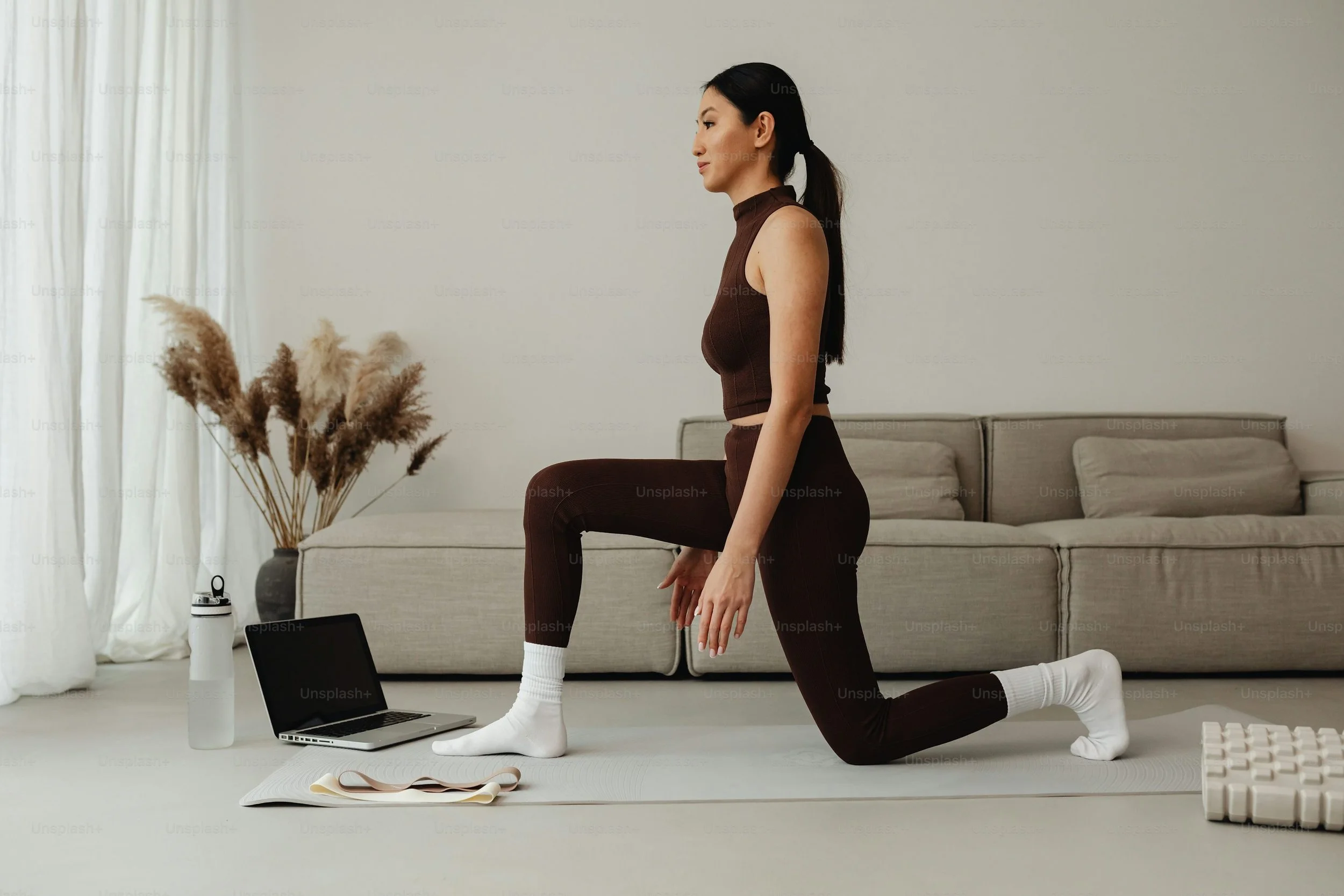How to Finally Unlock Your Deep Squat
Struggling to reach parallel—or hitting pain before you get there—isn’t a sign of weakness. It’s usually a sign that your body is guarding itself because something in your mobility or movement mechanics isn’t fully dialed in. The truth is, if elite athletes like 7’4” Victor Wembanyama can squat to the floor, height or limb length isn’t the limiter. What matters is identifying the real movement restrictions and addressing them systematically.
Step 1: Check Your Ankle Mobility
Limited ankle dorsiflexion is the silent culprit behind shallow squats. It affects how your shin travels over your foot and changes how your knees, hips, and spine interact.
Quick screen:
Stand and shift your knee forward over your toes.
If your heel lifts or your balance feels off, your ankle range is restricting your squat.
Fix → Knees-Over-Toes Lunge
Keep the heel flat, foot relaxed, and allow natural pronation.
Shift forward slowly and controlled, 10 reps per leg.
Focus on letting the ankle move fully instead of resisting—it’s about retraining the joint, not forcing flexibility.
Step 2: Improve Hip Internal Rotation
Hips need to rotate inward as you descend. Without internal rotation, your knees and spine compensate, limiting depth and increasing stress.
Fix → Diagonal Bridge Rotation
One leg anchored and straight.
Rotate hips around the fixed leg.
Move slow, controlled, and focus on feeling the glutes and posterior hip release.
Step 3: Unlock the Pelvic Outlet
Tight glutes or overactive posterior chains can compress your pelvis, making deep squats uncomfortable.
Fix → Tall Kneeling Rock Backs (with support)
Sit back on a pad or pillow.
Relax the hips and breathe deeply.
Feel the sit bones widen with each inhale.
Particularly helpful for lifters with chronic back or glute tension.
Step 4: Train the Hinge from a Seated Position
If your torso collapses forward in the squat, you’re likely losing hip and core control.
Fix → Seated Hinge with Breathing
Sit wider than shoulder-width.
Hinge forward slowly without collapsing the upper body.
Pause and breathe for 10 reps.
This teaches your hips to relax into the bottom while maintaining spine integrity.
Step 5: Practice the Thigh Bone Tilt
At the bottom of the squat, the femur should tilt backward. Lack of this motion often shows up as knee or spine compensation.
Fix → Pause Squats with Heel Elevation
Stand on a plate or wedge.
Squat to just above parallel, pause, and shift weight toward the heels.
Relax glutes and feel the femur tilt back.
8–10 slow reps, progressing to flat ground as mobility improves.
Step 6: Respect the Repetition Rule
Sometimes, mastery comes from simply repeating the movement. Your body needs time to learn deep squatting mechanics. If injuries or tightness are present, the above drills target the key mobility deficits that most lifters overlook.
Training Smarter in New York
For lifters training in the streets, gyms, and studios of New York, these mobility and movement strategies aren’t optional—they’re essential. Urban routines, tight schedules, and heavy lifting demands make it even more critical to move efficiently and prevent compensatory patterns. A focused approach to squat mechanics can save months of frustration and reduce injury risk.
What’s Really Holding Your Squat Back?
Deep squats aren’t about forcing your body into position—they’re about systematically unlocking the joints and muscles that hold you back. With consistent practice and the right sequence, you can squat deeper, safer, and with more control than ever.
Ready to Move Without Limits?
If your squats feel stuck or you’re tired of guessing which drills actually work, it’s time to bring clarity to your movement. Our New York-based team helps lifters unlock mobility, strengthen key movement patterns, and train with confidence—so every rep feels intentional, controlled, and pain-free.
Book a one-on-one session with Moment PTP today and experience the difference of precision-guided squat mechanics.
